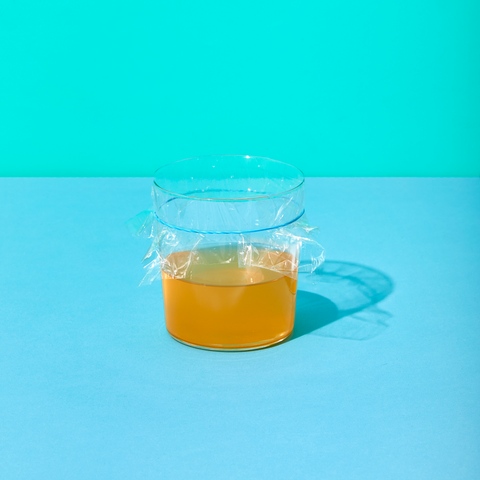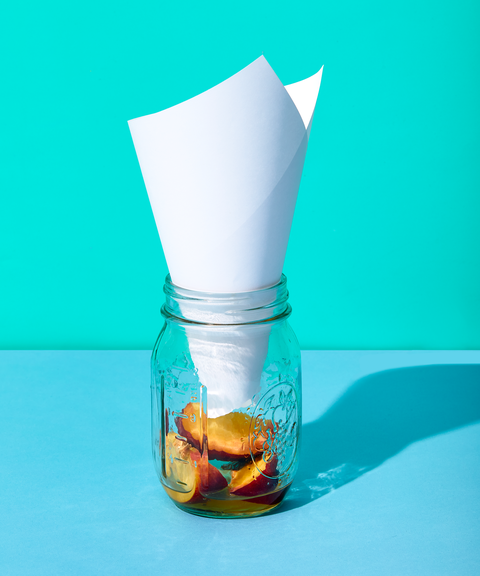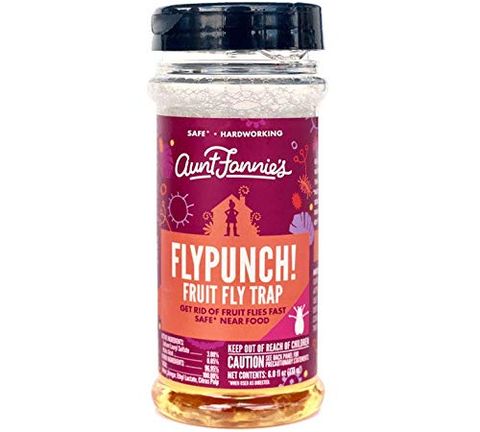You’re not alone in your love of seasonal produce: Pesky fruit flies always seem to find their way to your farmer’s market haul before you even get a chance to fully enjoy it. And it doesn’t take long for fruit flies to take over your kitchen — as soon as you see one, it’s only a matter of time before it feels like you’re battling thousands. Fortunately, you don’t have to suffer a fruit fly infestation forever — there are simple and effective ways to get rid of fruit flies fast using natural fruit fly traps you can make at home.
First of all, what causes fruit flies anyway?
If you’re looking to get rid of fruit flies, you might be wondering how you got them in the first place. According to the experts at Orkin, fruit flies are attracted to ripe, rotting, or decayed fruit and produce, as well as fermented goods like beer, liquor, and wine. Female fruit flies lay about 500 eggs at a time, and the eggs hatch in as little as 24 hours. Obviously, that makes these critters almost impossible to control.
To cut off fruit flies from their food source and prevent them from entering your home, take these preventive measures to get rid of fruit flies.
- Throw out overripe produce
- Store fruits and veggies in the fridge
- Wash produce as soon as you get home to remove any potential eggs or larvae
- Take out the garbage regularly
- Clean up spills ASAP, especially fruit juice or alcohol
Can I just use bleach kill fruit flies?
If you notice fruit flies in your drain, you might consider pouring bleach down the drain. Doing so might kill some larvae, but it will not kill enough of the eggs or larvae to eliminate the problem. That’s because bleach passes down the drain too quickly to do a thorough job.
How to get rid of fruit flies using a DIY fruit fly trap:
- Make a trap with apple cider vinegar and plastic wrap.
- Trap flies with a paper cone, vinegar, and old fruit.
- Drown flies by leaving out a bowl of vinegar and dish soap.
- Put out an almost-empty bottle of old wine or beer.
- Buy Aunt Fannie’s FlyPunch! on Amazon.
You may also want to double-check that your pests in question aren’t drain flies, which lurk around drains or garbage disposals, or fungus gnats, which prefer overwatered houseplants. For those critters, you’ll want to check out our guide for how to get rid of gnats. If you’re sure you’ve identified the critters correctly, then try one of these effective remedies to get rid of fruit flies in your kitchen.
1. Apple Cider Vinegar and Plastic Wrap
For this DIY fruit fly trap, pour a little apple cider vinegar into a glass, or just remove the cap from a bottle. (It doesn’t have to be full — nearly empty will also work.) Cover the opening in plastic wrap and secure with a rubber band. Then, poke a few small holes for the fruit flies to enter. They can’t resist the scent of vinegar, and they won’t be able to exit once they’re inside.
For an even better chance at success, make several of these traps and place them around your kitchen.
2. A Paper Cone, Vinegar, and Old Fruit
Place a little vinegar and a chunk of very ripe fruit in a jar. Then, roll some paper into a cone and stick it into the jar, placing the narrow opening down. (You can recycle or compost the homemade funnel afterwards.) The smell of rotting produce will help entice the fruit flies into the mixture, but the cone part of this fruit fly trap makes it difficult for them to get out.
3. Vinegar and Dish Soap
If you find your fruit flies impervious your plastic wrap or paper cone traps, try adding three drops of dish soap to a bowl of vinegar, and leave it uncovered. The soap cuts the surface tension of the vinegar so the flies will sink and drown.
4. Old Wine or Beer
Like vinegar, fruit flies love the smell of wine. Try leaving out an open bottle with a little leftover liquid — the skinny neck will keep the flies trapped. The Old Farmer’s Almanac also recommends using stale beer to attract fruit flies to a DIY trap. Add a couple of drops of dish soap to either for surer success.
5. Aunt Fannie’s FlyPunch
The chemists in Good Housekeeping Institute were excited to see this product cross their desks, especially Senior Chemist Sabina Wizemann, who found that it worked better in her home than other DIY remedies she’s tried.
The mixture uses the active ingredients sodium lauryl sulfate (a surfactant used in soaps) and malic acid (found in fruit) and comes in a stand-up jar. All you have to do is open the top, set it on your counter, and “watch the cycle of life unfold.”
Source: Home Ideas - goodhousekeeping.com







